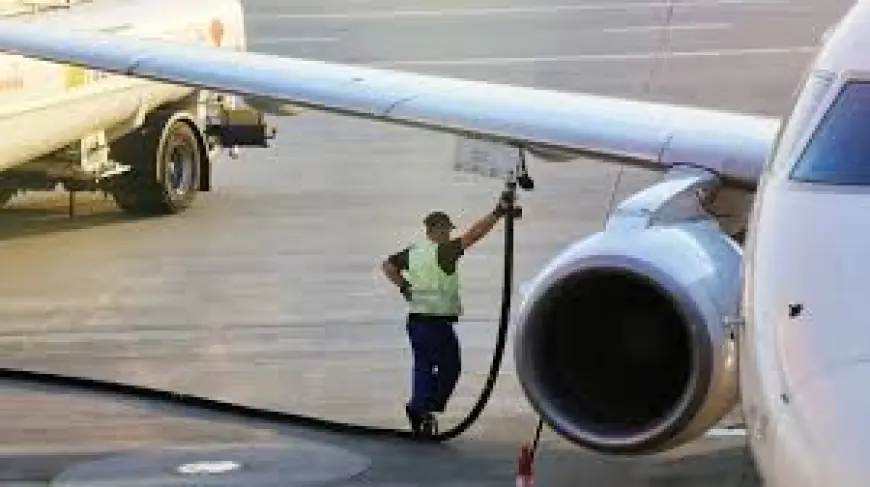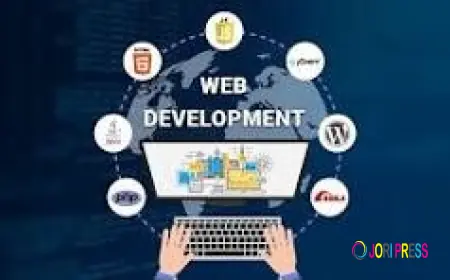Top Players in India Aviation Fuel Market 2030F
The surge in air travel demand in India is a major driver for the aviation fuel market. With the rapid expansion of the middle class and increased disposable incomes, more people are traveling domestically and internationally.

The aviation sector in India is experiencing an unprecedented transformation, and at the heart of this evolution lies a critical component—aviation fuel. As per a recent study, the India Aviation Fuel Market, valued at USD 93.78 million in 2024, is projected to grow to USD 153.25 million by 2030, advancing at a CAGR of 8.53% during the forecast period. This growth is propelled by increased air travel demand, government initiatives, technological advancements, and the gradual incorporation of sustainable fuel solutions.
Industry Key Highlights
- Market Size (2024): USD 93.78 Million
- Forecasted Size (2030): USD 153.25 Million
- CAGR (2024-2030): 8.53%
- Dominant Fuel Type: Aviation Turbine Fuel (ATF)
- Fastest Growing Aircraft Segment: Rotorcraft
- Fastest Growing Region: South India
Download Free Sample Report: https://www.techsciresearch.com/sample-report.aspx?cid=25168
Market Drivers Fueling Growth
1. Rising Middle-Class Population and Disposable Income
India's economic growth has ushered in an expanding middle-class population with higher disposable incomes. As a result, air travel is no longer a luxury but a necessity for many Indians. Increased air traffic leads directly to higher aviation fuel consumption.
2. Government Policies Boosting Connectivity
Initiatives like UDAN (Ude Desh ka Aam Naagrik) have revolutionized regional air travel, bringing connectivity to remote areas. As regional airports become operational, the frequency of flights rises, thereby escalating aviation fuel demand.
3. Dominance of ATF (Aviation Turbine Fuel)
Despite the growing emphasis on sustainability, ATF remains the primary fuel due to its cost-effectiveness and established supply chains. Commercial and defense aircraft rely heavily on ATF, providing a stable demand base.
4. Rapid Urbanization and Infrastructure Development
The rise of smart cities and improved airport infrastructure, particularly in Tier-2 and Tier-3 cities, has created a strong backbone for aviation operations. Enhanced airport infrastructure supports fuel logistics and storage facilities, ensuring efficient distribution.
5. Expansion of the Rotorcraft Segment
Helicopters are gaining popularity in applications such as medical evacuations, tourism, corporate travel, and defense. Their ability to operate in tough terrains and remote areas has spurred fuel demand within this aircraft category.
Emerging Trends Shaping the Market
1. Sustainable Aviation Fuel (SAF) Adoption
While still nascent in India, SAF is steadily making inroads driven by environmental commitments and global pressure to cut carbon emissions. The integration of SAF, though currently limited by production and cost, is expected to rise as investments in R&D and biofuel technologies increase.
2. Digital Optimization in Fuel Management
Digital tools and AI-powered platforms are now being used to optimize flight paths, reduce fuel burn, and monitor fuel efficiency. This digital transformation is streamlining operations and reducing costs for airlines.
3. Public-Private Collaborations
Strategic partnerships between fuel suppliers, aviation companies, and government agencies are pushing innovation. Joint efforts are enabling the development of hybrid fuels, biofuels, and new infrastructure for SAF.
4. Increased Use of Analytics and Automation
The use of predictive analytics for fuel demand forecasting and automation in refueling operations is improving reliability, reducing wastage, and minimizing delays in aviation operations.
5. Focus on Carbon Neutral Growth
India's aviation industry is aligning with global efforts such as CORSIA (Carbon Offsetting and Reduction Scheme for International Aviation). Airlines are investing in cleaner fuels and efficient aircraft to meet these standards.
Market Segmentation Snapshot
By Type:
- Aviation Turbine Fuel (ATF)
- Sustainable Aviation Fuel (SAF)
By End User:
- Commercial Aviation
- Military Aviation
- Others (Private Jets, Helicopter Charters)
By Aircraft Type:
- Fixed-Wing Aircraft
- Rotorcraft
- Others
By Region:
- North India
- South India (Fastest Growing)
- East India
- West India
Regional Spotlight: South India
South India has emerged as a hotbed for aviation fuel demand. Cities like Bengaluru, Chennai, and Hyderabad are experiencing rapid air traffic growth due to strong business hubs, expanding IT industries, and international tourism. Enhanced airport facilities and government support for regional connectivity further contribute to the rising fuel consumption.
Competitive Landscape
The India aviation fuel market is dominated by a mix of public sector enterprises and private players:
Major Players Include:
- Indian Oil Corporation Limited (IOCL)
- Bharat Petroleum Corporation Limited (BPCL)
- Hindustan Petroleum Corporation Limited (HPCL)
- Reliance Industries Limited (RIL)
- Shell India Pvt. Ltd.
- TotalEnergies Marketing India Pvt. Ltd.
- ONGC Petro additions Limited (OPaL)
- ROSNEFT
- Delhi Aviation Fuel Facility Private Limited (DAFFPL)
- Thyssenkrupp India
These companies are focusing on strategic expansions, fuel efficiency innovations, and SAF development to gain competitive advantage. Their emphasis on network growth, digital integration, and partnerships with airport authorities helps them meet increasing fuel demands while improving delivery efficiency.
Challenges Impacting Market Growth
1. Volatility in Crude Oil Prices
The aviation fuel market remains vulnerable to international crude oil price fluctuations, impacting operational costs for airlines.
2. High Production Costs of SAF
Though SAF offers long-term benefits, its high initial production costs and limited domestic manufacturing hinder adoption.
3. Taxation and Regulatory Hurdles
ATF in India is not under GST and is subjected to state-level taxes, making fuel more expensive and creating regional disparities in pricing.
4. Infrastructure Constraints
Limited infrastructure for SAF storage, blending, and distribution poses significant barriers to scale sustainable fuel usage.
Future Outlook
The future of India’s aviation fuel market looks increasingly dynamic and promising. The continued growth of passenger and cargo traffic, coupled with initiatives to boost air connectivity, will drive robust fuel consumption.
Key areas of development include:
- Expansion of SAF adoption with government incentives
- Implementation of digital fuel tracking and monitoring
- Strategic reserves for ATF to manage volatility
- Private sector investments in biofuel R&D
As SAF technologies become more cost-efficient and infrastructure improves, India is expected to emerge as a regional leader in sustainable aviation fuel in the long term. Rotorcraft growth, especially in emergency medical services and defense, will also continue to be a strong contributor to fuel demand.
10 Key Benefits of the Research Report
- Accurate Forecasting: In-depth data on market size, CAGR, and trends.
- Segment-Wise Analysis: Insights across fuel type, aircraft type, and regions.
- Competitive Intelligence: Profiles of key players and their strategies.
- Emerging Trends: Covers SAF, digital optimization, and sustainability shifts.
- Regional Insights: Detailed growth analysis for all major Indian regions.
- Policy Impact: Evaluates government initiatives like UDAN and GST influence.
- Challenges & Risks: Identification of market restraints and risk areas.
- Investment Opportunities: Pinpoints sectors ripe for investment.
- Technological Forecasting: Covers fuel efficiency and innovation pathways.
- Strategic Planning Tool: Aids in business expansion and market entry decisions.
Conclusion
The India Aviation Fuel Market is poised for sustainable and steady growth as the country continues to expand its aviation network. With a clear roadmap toward digital integration, alternative fuels, and policy support, the sector is well-positioned to meet future challenges and capitalize on emerging opportunities.
While Aviation Turbine Fuel will remain a staple in the short to medium term, the progressive transition to Sustainable Aviation Fuel, aided by collaborative frameworks and technological innovation, will define the future trajectory of the Indian aviation fuel industry.
Stakeholders across the aviation ecosystem—from government regulators and fuel manufacturers to airlines and technology providers—must work in tandem to ensure that India's aviation fuel strategy aligns with its ambitions for economic development, environmental stewardship, and global leadership in aviation.
Contact Us-
Mr. Ken Mathews
708 Third Avenue,
Manhattan, NY,
New York – 10017
Tel: +1-646-360-1656
Email: [email protected]
Website: www.techsciresearch.com
What's Your Reaction?
 Like
0
Like
0
 Dislike
0
Dislike
0
 Love
0
Love
0
 Funny
0
Funny
0
 Angry
0
Angry
0
 Sad
0
Sad
0
 Wow
0
Wow
0

















































